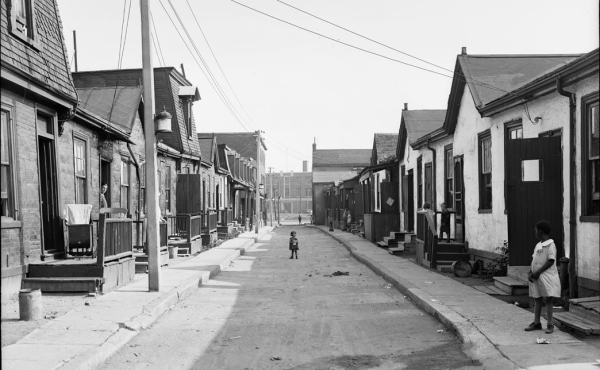

The heat is on
“Heat is a much under-reported killer,” Toronto’s well-known street nurse, Cathy Crowe, told me last fall during the municipal election when I asked her what the biggest issues in housing and homelessness were. I was shocked. Surely, the frigid Canadian winter was more difficult to survive? As it turns out, our increasingly sweltering summers have become a bigger challenge. “It’s a phenomenon that’s suddenly developed,” said Crowe, “and there’s no response for it.”
In a deputation at the Toronto Board of Health’s April 16 meeting, Tanya Gulliver of the Toronto Disaster Relief Committee (TDRC) compiled more than a few deplorable details illustrating the city’s failure to take control of the issue. In 2005, for example, the city approved an Urban Heat Island Mitigation Strategy, but in 2006, it was discovered that no staff had been assigned to implement it. Last year, there were no cooling centres located in Scarborough, and while that will change this year, Gulliver argues that accessible cooling centres should be available in every ward. Right now — since a centre in Scarborough has yet to be set up — there are just four throughout the entire city.
In light of the extreme heat that claimed nearly 15,000 lives in France in the summer of 2003, and over 600 lives in Chicago in 1995, we should really be working harder to prevent a similar disaster here.
On June 29, the Municipal Licensing and Standards Committee considered a recommendation from the Board of Health to establish a maximum temperature for multi-unit residential buildings (a minimum temperature bylaw already exists to protect tenants during the winter months). “The problem is, it’s very difficult to go to existing apartment buildings and ask them to retrofit,” committee chair Howard Moscoe told me. One option council has asked staff to look into is each building having its own cooling centre. Moscoe doesn’t expect a report on the issue to come back until September at the earliest, meaning many residents will have to endure — and survive — at least one more summer with few options for relief from the heat.
Toronto’s fresh air
Councillor Norm Kelly remains skeptical that the city’s green plan will have any effect on the clean-air front. “It ignores that our air has been getting progressively cleaner,” Kelly told his colleagues on the executive committee June 25. In response, environmentalist Councillor Gord Perks lets out a long sigh. “Kelly has his own views; they’re not widely shared,” he says. “You can look at nitrous oxides, ozone, particulate matter, our contribution to greenhouse gases. One or two of those measures have shown some improvement, but overall, I don’t think you can make the claim that Toronto’s air is cleaner.”
photo by King Shuk




One comment
It may be very difficult to get change made in older buildings against the owner’s will, unlike say, fire escapes etc., but what about a maximum heat bylaw for all premises without a prescription of how to do it?
And then there’s tweaking a lot of the energy programs to a) think of summer heat and b) think of tenants in a more comprehensive way. For instance in many buildings child safety from kids falling out of windows was a big deal, so somehow a mandate was done to have window latches that restrict heat/air change as well as kids. But if many of the slider windows were put in to have the openings at the top of the room to let heat out, greater ventilation could occur where it was needed, but that’s too complex I guess.
I’m regrettably under two flat rooves in both office and home and fry in my thermal slums and don’t wish to get air conditioning (if the wiring can support it either). There are several simple things that could be done beyond fans, moving I suppose being one option other people think of. Other thermal slums also have some simple things that could be done and somehow we’ve got to get this happening.